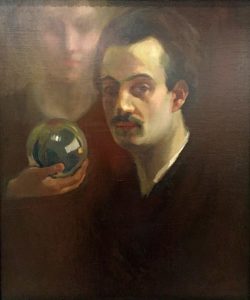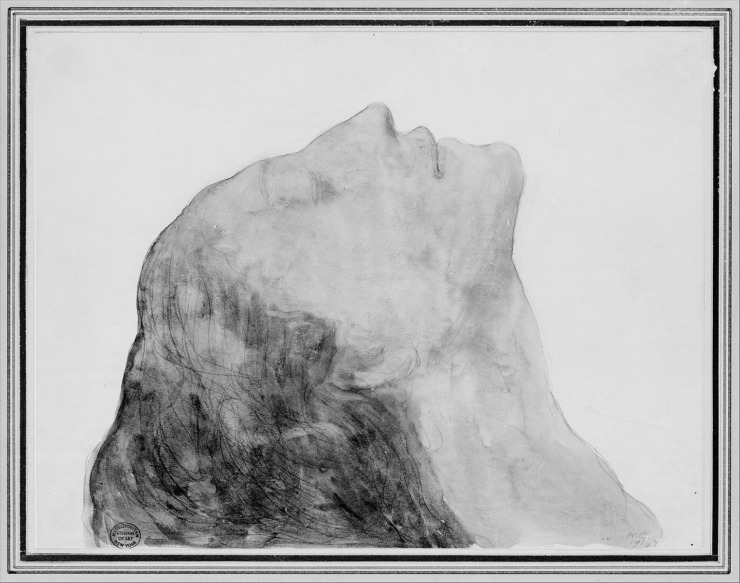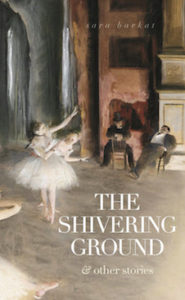< Return to Kahlil Gibran Poems
When My Sorrow Was Born
When my Sorrow was born I nursed it with care, and watched over it with loving tenderness.
And my Sorrow grew like all living things, strong and beautiful and full of wondrous delights.
And we loved one another, my Sorrow and I, and we loved the world about us; for Sorrow had a kindly heart and mine was kindly with Sorrow.
And when we conversed, my Sorrow and I, our days were winged and our nights were girdled with dreams; for Sorrow had an eloquent tongue, and mine was eloquent with Sorrow.
And when we sang together, my Sorrow and I, our neighbours sat at their windows and listened; for our songs were deep as the sea and our melodies were full of strange memories.
And when we walked together, my Sorrow and I, people gazed at us with gentle eyes and whispered in words of exceeding sweetness. And there were those who looked with envy upon us, for Sorrow was a noble thing and I was proud with Sorrow.
But my Sorrow died, like all living things, and alone I am left to muse and ponder.
And now when I speak my words fall heavily upon my ears.
And when I sing my songs my neighbours come not to listen.
And when I walk the streets no one looks at me.
Only in my sleep I hear voices saying in pity, “See, there lies the man whose Sorrow is dead.”
—Kahlil Gibran
About Kahlil Gibran
Khalil Gibran (جبران خليل جبران) was a writer, visual artist, and poet with a prolific collection of work. He was born in 1883 in a village in the Mount Lebanon Mutasarrifate and in 1893 moved with his family to the United States where he enrolled in school in Boston, then went back home when he was fifteen to enroll in the Collège de la Sagesse. In 1902 he came back to Boston, and two years later his artwork was displayed for the first time. In 1905 he published his first book, and after that studied art in Paris for three years. Gibran wrote books in both Arabic and English, including poems, plays, fables, short stories, and political essays.
His cousin, Kahlil G. Gibran, a sculptor, described his work in this way. “Ignoring much of the traditional vocabulary and form of classical Arabic, he began to develop a style which reflected the ordinary language he had heard as a child in Besharri and to which he was still exposed in the South End [of Boston]. This use of the colloquial was more a product of his isolation than of a specific intent, but it appealed to thousands of Arab immigrants.” (Robin Waterfield, 1998) He was inspired by the King James Bible, the works of William Blake, whose drawings were in Gibran’s opinion “so far the profoundest things done in English.” (Joseph Ghougassian, 1973) Other inspirations included Francis Marrash (فرنسيس بن فتح الله بن نصر الله مرّاش), Walt Whitman, and Friedrich Nietzsche.

“Self Portrait and Muse” by Khalil Gibran
With visual art Gibran worked in oils, pencil, ink, watercolor, and gouache, and created more than seven hundred pieces of visual art. His work is featured in a number of museums, and his work The Prophet has been translated into more than 100 languages and has never been out of print, becoming popular in the American counterculture and New Age movement. The book was admired by Elvis Presley, John Lennon, Johnny Cash, David Bowie, Gilad Hochman (גילעד הוכמן) and Dana Al Fardan. Gibran has museums, memorials, schools, a garden, and a crater on Mercury named after him.
I hope you enjoyed When My Sorrow Was Born by Kahlil Gibran! If you liked When My Sorrow Was Born by Kahlil Gibran, you might enjoy more poems by him below.
< Return to Khalil Gibran Poems
“Stunning…from start to finish. Barkat is a fierce new voice.”

